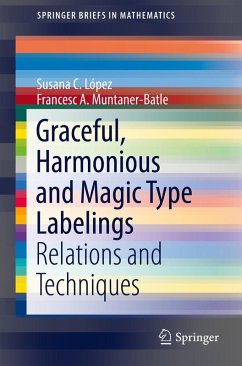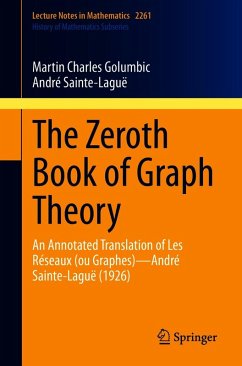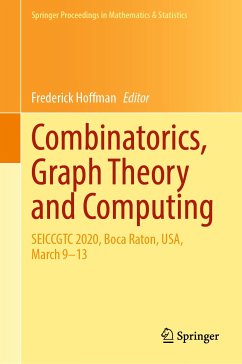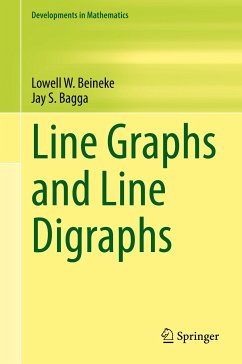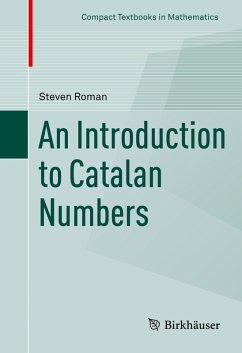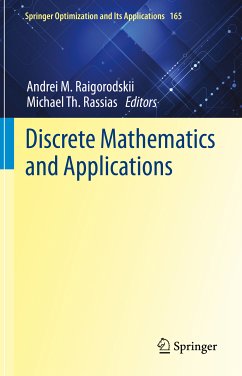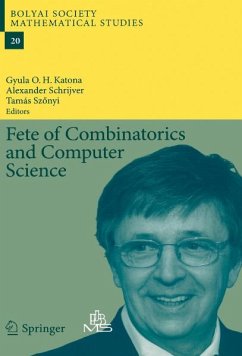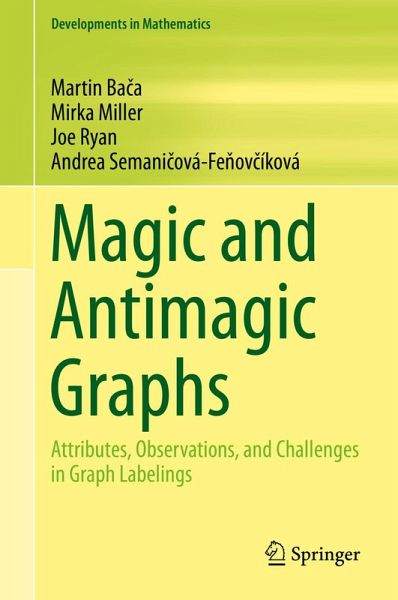
Magic and Antimagic Graphs (eBook, PDF)
Attributes, Observations and Challenges in Graph Labelings
Versandkostenfrei!
Sofort per Download lieferbar
104,95 €
inkl. MwSt.
Weitere Ausgaben:

PAYBACK Punkte
52 °P sammeln!
Magic and antimagic labelings are among the oldest labeling schemes in graph theory. This book takes readers on a journey through these labelings, from early beginnings with magic squares up to the latest results and beyond.Starting from the very basics, the book offers a detailed account of all magic and antimagic type labelings of undirected graphs. Long-standing problems are surveyed and presented along with recent results in classical labelings. In addition, the book covers an assortment of variations on the labeling theme, all in one self-contained monograph.Assuming only basic familiarit...
Magic and antimagic labelings are among the oldest labeling schemes in graph theory. This book takes readers on a journey through these labelings, from early beginnings with magic squares up to the latest results and beyond.
Starting from the very basics, the book offers a detailed account of all magic and antimagic type labelings of undirected graphs. Long-standing problems are surveyed and presented along with recent results in classical labelings. In addition, the book covers an assortment of variations on the labeling theme, all in one self-contained monograph.
Assuming only basic familiarity with graphs, this book, complete with carefully written proofs of most results, is an ideal introduction to graph labeling for students learning the subject. More than 150 open problems and conjectures make it an invaluable guide for postgraduate and early career researchers, as well as an excellent reference for established graph theorists.
Starting from the very basics, the book offers a detailed account of all magic and antimagic type labelings of undirected graphs. Long-standing problems are surveyed and presented along with recent results in classical labelings. In addition, the book covers an assortment of variations on the labeling theme, all in one self-contained monograph.
Assuming only basic familiarity with graphs, this book, complete with carefully written proofs of most results, is an ideal introduction to graph labeling for students learning the subject. More than 150 open problems and conjectures make it an invaluable guide for postgraduate and early career researchers, as well as an excellent reference for established graph theorists.
Dieser Download kann aus rechtlichen Gründen nur mit Rechnungsadresse in A, B, BG, CY, CZ, D, DK, EW, E, FIN, F, GR, HR, H, IRL, I, LT, L, LR, M, NL, PL, P, R, S, SLO, SK ausgeliefert werden.
Alle Preise in Euro und inkl. der gesetzl. MwSt. | Innerhalb Deutschlands liefern wir preisgebundene Bücher versandkostenfrei. Weitere Informationen: bitte hier klicken
Support
Bitte wähle dein Anliegen aus:
Rechnungen
Bestellstatus
Retourenschein
Storno




